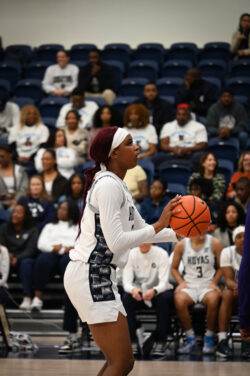Marathoners are a different type of athlete, driven to take on a 26.2 mile run just for that inexplicable runner’s high.
“It’s a very solitary achievement,” Matt O’Brien (MSB ‘10) said. “I train by myself, I do this by myself. I don’t do it for anyone else.”
“During a run, especially a long one, yeah, it sucks, but the feeling at the end of a long run, it’s beautiful,” Diek Minkhorst (MBS ’10) said. “Hell yeah, I just ran 20 miles. It feels good and totally worth it.”
Running a marathon demands months of training and commitment. Strict schedules are followed, generally made up of one long run, three mid-distance runs and a short run or two a week. For a runner doing 60 miles a week, that comes to one 20 mile run, two 12-15 mile runs and two 5-9 mile runs a week.
“I think running is more a mental sport than any other sport,” Minkhorst said. “It’s just you out there, and no specific skill is involved.”
Months of vigorous training and workouts all boil down to one day and 26 miles. Butterflies clench up the stomach as questions race through the mind. Was the preparation enough? Do I have enough endurance? Will my legs give out? What if I don’t finish?
”I was nervous,” Amanda Scheer (COL ‘10) said. “I had never run one, so I didn’t know what to expect.”
Of course, there are the horror stories of runners passing out on from dehydration or going into cardiac arrest. Excessive mileage takes a toll on the body. Many times, women are told not to run marathons before the age of 18 to avoid the risk of damage to the growth plates. Peak ages for women marathoners are the late twenties and early thirties. For men, the best years are the early twenties.
Scheer, age 20, has followed that advice. She completed her first half marathon a month ago at the Philadelphia Half Marathon, finishing with a time of 1 hour 27 minutes. Currently, she is training for the Miami half marathon in late January, but still holds hopes of completing a full marathon.
“I want to wait for a while, but I definitely want to do one,” Scheer said. “I want to run a marathon, but maybe not race it. 13.1 miles is just enough pain. I don’t know if I could keep going on at race pace.”
This past weekend, D.C. hosted the Marine Corps Marathon, commonly called “The People’s Marathon.” Because the race has no purse, many competitive and professional runners don’t enter, so making this marathon perfect for starters. Both Minkhorst and O’Brien made their marathon debut at the race over the weekend.
“It’s a good challenge,” O’Brien said. “It’s hard to run at school because you get distracted. So if you are building up to something it gives you a reason to get into shape.”
Both described the race with awe.
“I have never run a race with like 100,000 spectators,” Mink said. “It was the coolest thing. For the first five miles I couldn’t stop smiling. Every time you came to a crowd, they just fueled you so much.”
While the first few miles might have been filled with excitement, the time for hard work quickly set in. The two agreed that the last third of the race was the most difficult. Fans had dwindled and runners had spread out.
“The last five miles are what are really extreme,” O’Brien said. “You start to lose it in your head, go a little delirious.”
Recouping is difficult as well. Days go by before total strength is regained, but once it is, these runners are up and at it again.
“I loved the experience,” Minkhorst said. “The feeling at the end is like none other I have ever had.”




